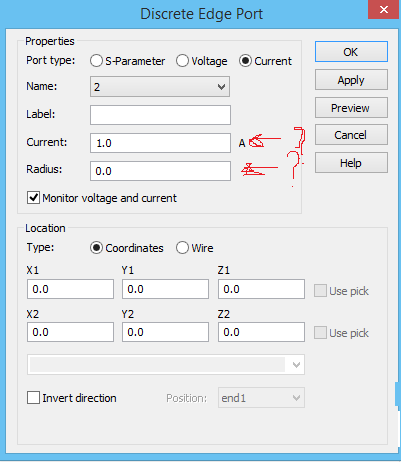Lightning strike simulation
My project is to simulate a lightning strike on a ship using CST Microwave Studio 2014.
I'm using discrete port and then it asks me if the type of the port is impedance, voltage or current. I pick current and then it asks me to give prices for current and radius. Any help with these two prices?
Also, is there any way to plot the E-field in 1D? Field Monitor gives us the E-field only in 2D and 3D.
Thanks in advance!
The lightning bolt can be parallel to a run of wiring, and by induction can cause a surge in the wiring. The surge might consist of current flow, or if not then it might manifest as a voltage spike. A parallel bolt is probably the scenario that will cause maximum surge, and most damage.
The bolt does not need to strike wiring in order to ruin equipment.
I think I read lightning bolts are several inches in diameter. Hundreds or thousands of Amperes.
Thank you for your answer.
I have already inserted the excitation signal (double exponential) and the excitation source (current discrete port). However, it asks me to put prices for the current amplitude of the port and the radius of the port.
Do I need to pick a particular price although I've already inserted the excitation signal and if yes which?
Price is a term on a bill of materials. Your simulator might create such list, as a deluxe option.
I never heard of price being a parameter for electrical behavior.
By the way, my earlier post takes for granted that a direct lightning strike is at the top of the list, for causing the most damage to equipment. However that's a catastrophic event which we need not try to simulate.
This is what I'm asking for. By the way I haven't heard of a price being such parameter either.

Using BS EN 62305 at worst case your lightning current should be 200kA. As for the radius, I'm unsure. Try altering this variable and run the model to see what effect this will have on the results.
